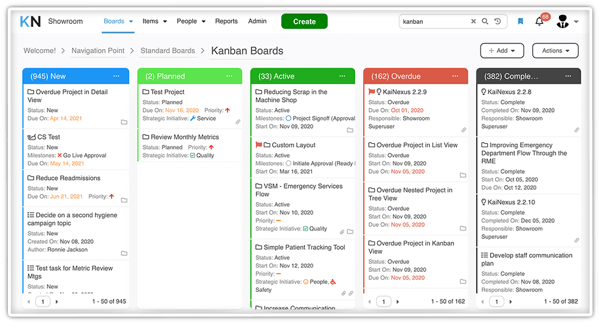 Many leaders are finding themselves faced with the task of managing a 100% remote team for the first time. The challenge is amplified by the fact that remote work is new to most employees, and even getting together for an in-person meeting once in a while is impossible.
Many leaders are finding themselves faced with the task of managing a 100% remote team for the first time. The challenge is amplified by the fact that remote work is new to most employees, and even getting together for an in-person meeting once in a while is impossible.
Unfortunately, business challenges and process defects don’t disappear because there’s a pandemic. In many cases, they just get worse. That’s why we’ve been getting questions about how to operate tried and true improvement tools in this new reality.
This post offers some things to think about if you are going to hold a kaizen event with a remote workforce. It assumes that you have some experience with kaizen events, if not, we recommend you start with this article.
Here are 10 special considerations for remote kaizen events.
Pick Your Targets Carefully
It is always important to match kaizen events up with the right kinds of challenges. After all, they get 100% of the attention of a small team over several days. That’s a significant commitment, so the potential rewards need to be pretty high. This is especially true during uncertain times like the ones we face right now. It’s critical to be clear about why this issue needs to be tackled right now.
Related: Is a kaizen event the right tool for the job?
Be Sure the Executive Sponsor is 100% On Board
Since people won’t see team members engaged in the event, they may be tempted to assign other tasks. That’s a sure-fire way to derail your event. Leaders must be clear that team members are unavailable for other work during the event and that alternative resources will be made available. If executive support is missing, expect roadblocks.
Choose a Strong Facilitator
Every kaizen event needs someone to guide it through the planning, execution, and follow-up phases. Until your team gets the hang of it, doing your event without getting into the same room will add an extra degree of difficulty. That’s why we recommend choosing someone who has experience either running kaizen events specifically or managing a remote team. Later on, new team members can get the chance to grow by leading an event, but this probably isn’t the best time.
Define Roles and Decision-Making Authority
One of two bad things can happen to remote teams that don’t have a clear set of roles and responsibilities. Either everyone makes their own decisions without consulting others, and chaos ensues, or everyone is so afraid of making the wrong choice that nothing gets done. Don’t let that happen to your event. Everyone should know their responsibilities and what decisions they can make on their own and which require consultation.
Related: Pick the A-team for your kaizen event
Set Reasonable Expectations
We said earlier that the expected results from a kaizen event must be significant to justify the resources. Still, in this case, we recommend being somewhat cautious and picking achievable targets. Even the most dedicated employee who is newly working from home, potentially with children who can’t go to school or daycare, will be distracted. This is a stressful time for everyone. That doesn’t mean improvement work needs to come to a halt but be realistic and compassionate.
Don’t Skimp on Planning
Whether or not your kaizen event will be successful is decided before it even begins. Planning and laying the groundwork are crucial, and they take time. Don’t be tempted to skimp on the work of defining the charter, preparing the roadmap, and documenting desired outcomes because you are in a rush to solve a pressing problem. Even though kaizen events are sometimes called “blitzes,” patience is required.
Related: A kaizen event roadmap
Use Online Software to Document Everything
Many organizations use physical huddle or Kanban boards to manage kaizen events. That’s not going to work with everyone at home. Fortunately, you can switch to online software for managing your project and get some additional benefits. Everyone should have access to all of the tasks, documents, and process measurement data from wherever they happen to be. Mobile apps are ideal for remote employees, as well. System-generated alerts and notifications are perfect for making sure that everything gets done on time.
Establish Rules of Engagement
This is generally good advice for managing remote teams. There is a flow to how communication happens in an office that won’t exactly translate to the remote-based world. For example, employees may know that a closed door means the occupant isn’t to be disturbed. No one knows if your home office door is open or closed. So, talk about how team members will be available to each other. When is it best to use text messaging or instant messaging services like Slack? When is the facilitator available for ad hoc phone calls? Kaizen events often include people who don’t work together every day, so being open about the flow of engagement is a big help.
Designate a Quiet Period
Every bit of advice you’ll read about managing remote teams will tell you to communicate openly and often. Kaizen events by nature involve lots of back and forth between team members, so add those things together, and you’ve got a ton of messages and calls. That can make it very difficult for employees to concentrate on work that requires their full attention. It is smart to designate a certain period that everyone can work on their individual tasks without any non-urgent interruptions or scheduled meetings. People can still log progress in the improvement management system, but for that hour (or however long you decide), they won’t reach out to others unless there is an emergency.
Use Video Conferencing
The team will need to meet at least once a day for the duration of the event. Video conferencing is the ideal way to conduct these meetings. Non-verbal communication is powerful. Video is also more effective than audio-only conference calls because the ability to see others reduces the number of interruptions and requests for comments to be repeated. It also humanizes people. (We all want to see your cat.) If you don’t have a video conferencing service in place, now is a great time to look for one. There are options at every price point, and many companies are offering video services for free during the duration of the pandemic.
We have always known that remote workers can be productive and engaged in improvement work, but given the abrupt change for many people, extra care is needed if you want your remote kaizen event to be a success. These tips should go a long way to help.
Got any other great ideas for improvement events with distributed teams? We’d love to see them in the comments.


Add a Comment